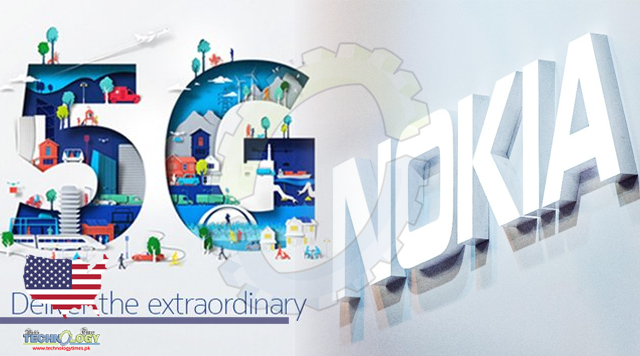Nokia and Newcore are distributing 117 megahertz of the Tribal Educational Broadband Service (EBS) to bring 5G broadband connectivity to rural Native American communities throughout the United States.

By Gabrielle N
This move came following Nokia’s rise of stocks due to Ericson’s unexpected earnings and 5G performance.
On Leveling US’ Tech Disparity
Nokia and Newcore are leveraging the EBS spectrum to connect more than 15,000 tribal members, according to Tech Investor News. This initial deployment is set to cover more than 12,000 square miles in North and South Dakota, Oklahoma and California and will involve the Standing Rock Sioux Tribe and the Cheyenne and Arapaho Tribes.
To Further Expand Connectivity Through Internet Access
In the past year, 400 Native American tribes were awarded by the Federal Communications Commission (FCC) with the EBS grant. The intention was that it should specifically serve tribal lands with a license for 5G broadband and wireless networking buildouts. This is also part of the CARES Act, Native tribes, including the Cheyenne and Arapaho tribes, were directly provided with funds to establish three cellular towers in their region.
Nokia said that its wireless solutions allow for rapid and cost-effective wireless connectivity across large areas and can cover multiple home and business connections from a single base station, making it suitable for rural areas, where connectivity is often scarce.
COO and general manager at NewCore Wireless Albert Kangas said, “Many of the Native American reservations tend to be in rural areas of the U.S.
Both companies involved in the project are hoping to help these communities establish “a renewed sense of control over their future, by building out next generation broadband solutions to expand internet and mobile access for the most remote areas of North America.”
EBS to Provide Help Amid Pandemic
John Pretty Bear, as councilman for the Standing Rock Sioux Tribe’s Cannonball District, said that the deployments will help level “the technology playing field” for Native American communities.
All members of our community, including our elders whom we pride ourselves in helping, will benefit from more affordable and accessible connectivity,” Bear said.
Bear also expounded on the relevance of the expansion of access to the internet for Native Americans, stressing how the current situation with the pandemic has highlighted the need for the connectivity more so than in recent years. He said that he looks forward to further innovations in the future, so as to improve the quality of life in their community.
“This is critical for the well-being of our people, especially during the pandemic where information about mass testing or vaccinations needs to be shared in real time. From online schooling, to telehealth, to affordable mobility and cellular phones, we look forward to improving the quality of life for everyone in our community.”
The initiative will use Nokia Digital Automation Cloud and NewCore’s integration and operational capabilities to bring an integrated network of LTE and 5G radio and core elements.
Nokia’s cloud platform reportedly offers high-bandwidth, low-latency wireless connectivity, local edge computing capabilities and a catalog with applications such as voice and video services.
What is 5G?
According to Qualcomm, 5G is the next generation wireless network technology that’s expected to change the way people live and work, as it is the fastest network connector in the market yet .
It is the 5th generation mobile network, which is the latest global wireless standard after 1G, 2G, 3G, and 4G networks. 5G broadband enables a new kind of network that is designed to connect virtually everyone and everything together including machines, objects, and devices.
Originally published at Tech times